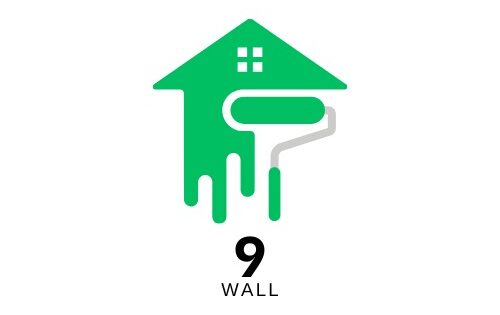The Keeper Standards Test is a comprehensive evaluation designed to measure and develop key skills in goalkeepers, covering technical abilities, physical fitness, and mental resilience. For aspiring goalkeepers or coaches, understanding this test can provide a framework for tracking growth, identifying strengths, and creating tailored training programs.
What is the Keeper Standards Test?
The Keeper Standards Test is widely used in competitive soccer to assess goalkeepers across various skill levels. By measuring capabilities in shot-stopping, positioning, distribution, communication, and more, the test helps athletes and coaches evaluate readiness and identify focus areas for improvement. It is essential for career advancement and team selections, particularly at advanced levels of play.
Key Components of the Keeper Standards Test
1. Shot-Stopping Skills
The most critical ability for goalkeepers is preventing goals. This part of the test involves making saves from multiple angles and distances, covering various scenarios such as:
- Reaction saves
- Diving techniques for high and low shots
- One-on-one duels
- Penalty kick situations
2. Positioning
Goalkeepers need to master positioning to be optimally placed in goal. The test examines:
- Initial positioning based on the ball’s location
- Proper angle play
- Adjustments during active play
- Effective responses to set pieces and crosses
3. Distribution and Ball Handling
Modern soccer heavily involves goalkeepers in offensive play. The distribution component focuses on:
- Accurate goal kicks and throws
- Controlled short passes to teammates
- Long-range passes that contribute to team transitions
4. Communication Skills
A goalkeeper’s voice on the field is essential in organizing the defense and ensuring the team’s overall strategy is implemented effectively. The test assesses:
- Vocal clarity and timing in calling instructions
- Leadership in defensive organization
- Confidence in directing defenders under pressure
5. Physical Fitness
Goalkeepers require specific physical attributes, such as agility, power, and endurance. This part of the test may include:
- Agility drills, measuring quickness and reaction time
- Power tests for explosive movements
- Endurance assessments for sustained performance
- Flexibility exercises to prevent injury
6. Mental Preparedness
Maintaining focus and confidence after high-pressure moments is vital for success. This component evaluates:
- Concentration and decision-making under pressure
- Emotional resilience following mistakes
- Confidence and mental discipline throughout the game
Why the Keeper Standards Test Matters
For Goalkeepers
The test provides a clear benchmark for identifying personal strengths and weaknesses, allowing goalkeepers to set realistic improvement goals and maintain motivation through measurable progress. Regular testing also instills discipline and a healthy competitive spirit.
For Coaches and Teams
Coaches benefit from the Keeper Standards Test as it aids in identifying promising talent, optimizing individual training, and making informed decisions for team compositions. Additionally, the test helps teams establish benchmarks across different age groups and skill levels, enabling structured progress tracking and talent development.
Adapting the Test for Different Skill Levels
The Keeper Standards Test can be tailored based on the goalkeeper’s age and proficiency. For youth players, the test might focus on building basic skills and promoting a positive learning experience. For more advanced players, rigorous drills and assessments ensure comprehensive skill development across technical, physical, and mental aspects.
Challenges in Implementing the Keeper Standards Test
While valuable, the test also presents some challenges:
- Standardization: Consistency across testing environments is crucial for accurate evaluation.
- Resource Allocation: Proper equipment and trained personnel are required for thorough testing.
- Psychological Impact: Players may feel pressure or disappointment depending on their results.
- Testing Frequency: Balancing test frequency with training schedules is important to avoid disrupting practice routines.
Future of the Keeper Standards Test
Technological advancements continue to refine the test, including:
- Video Analysis: High-speed cameras capture and analyze goalkeeping movements.
- Wearable Technology: Real-time tracking of physical performance metrics.
- Virtual Reality (VR): VR simulations offer realistic game-like scenarios for training.
Conclusion
The Keeper Standards Test is an invaluable tool for developing and evaluating goalkeepers. By identifying strengths and areas for improvement, this test enables both players and coaches to create effective, targeted training plans that foster growth and resilience.
FAQs
1. How often should a goalkeeper take the Keeper Standards Test?
The ideal frequency varies based on the level of play. Professional clubs may assess goalkeepers monthly, while youth academies might do so twice a year.
2. What age is appropriate for starting the Keeper Standards Test?
Youth players can begin with simplified versions of the test as early as eight years old, focusing on basic techniques and positioning.
3. How is mental preparedness measured in the Keeper Standards Test?
Mental preparedness is assessed through drills that simulate high-pressure situations, evaluating focus, decision-making, and resilience.
4. Do all teams use the same Keeper Standards Test?
The test structure may vary across clubs, but most tests include common components like shot-stopping, positioning, and distribution to evaluate goalkeeping fundamentals.
5. Can technology help improve test accuracy?
Yes, modern technologies like video analysis, wearables, and VR simulations provide more precise data on a goalkeeper’s skills and physical performance.







